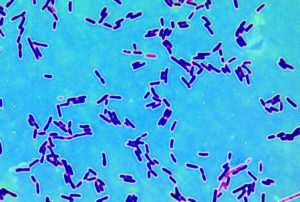 Previous research on the health benefits of eating fish, fish oil supplements, and other sources of omega-3 fatty acids has shown mixed results, with some studies revealing cardiac health benefits and others finding no benefit. However, when looking at recent studies separating eating foods rich in omega-3 fatty acids versus taking supplements, it appears that eating foods has various beneficial health effects, while taking a supplement may not find health benefits (here and here).
Previous research on the health benefits of eating fish, fish oil supplements, and other sources of omega-3 fatty acids has shown mixed results, with some studies revealing cardiac health benefits and others finding no benefit. However, when looking at recent studies separating eating foods rich in omega-3 fatty acids versus taking supplements, it appears that eating foods has various beneficial health effects, while taking a supplement may not find health benefits (here and here).
The latest research (reported in the journal JAMA Internal Medicine) looked at heart disease events (heart attack, cardiac related death) and actually measured the actual levels of omega-3 fatty acids in the participants' blood, as opposed to relying on questionnaires in which people report what they eat. The new study could not assess the usefulness of taking fish oil supplements, as opposed to eating fish, because so few people in the study took supplements. Thus the findings were generally from eating a diet rich in omega-3s from either fish or plant-based sources. (Note: By far the best source is fish. Some plant-based sources are: flaxseed, walnuts, edamame, black beans, kidney beans).
The new study — which combined 19 studies from 16 countries with more than 45,000 participants — found that higher circulating blood levels of omega-3 fatty acids were associated with a nearly 10 percent lower risk of a fatal heart attack, on average, compared with lower levels. The participants with the highest level of omega-3s in their blood had the greatest risk reduction — a more than 25 percent lower risk of having a fatal heart attack, the study found.
From Science Daily: Consumption of omega-3s linked to lower risk of fatal heart disease
A global consortium of researchers banded together to conduct an epidemiological study analyzing specific omega-3 fatty acid biomarkers and heart disease. They found that blood levels of omega-3 fatty acids from seafood and plant-based foods are associated with a lower risk of fatal heart attack.
A total of 19 studies were involved from 16 countries and including 45,637 participants. Of these, 7,973 people developed a first heart attack over time, including 2,781 deaths and 7,157 nonfatal heart attacks.
Overall, both plant-based and seafood-based omega-3s were associated with about a 10 percent lower risk of fatal heart attacks. In contrast, these fatty acids biomarkers were generally not associated with a risk of nonfatal heart attacks, suggesting a more specific mechanism for benefits of omega-3s related to death."At a time when some but not other trials of fish oil supplementation have shown benefits, there is uncertainty about cardiovascular effects of omega-3s," said Mozaffarian. "Our results lend support to the importance of fish and omega-3 consumption as part of a healthy diet."
Fish is the major food source of omega-3 fatty acids, including eicosapentaenoic acid (EPA), docosapentaenoic acid (DPA), and docosahexaenoic acid (DHA). According to the U.S. Department of Agriculture's National Nutrient Database, fatty fish such as salmon, trout, anchovies, sardines, and herring contain the highest amounts of omega-3 fatty acids, although all fish contain some levels. In addition to omega-3 fatty acids, fish provide specific proteins, vitamin D, selenium, and other minerals and elements. Alpha-linolenic acid (ALA) is the plant-based omega-3 fatty acid found in walnuts, flaxseed oil, and canola oil and some other seed and nuts and their oils.

 Amazing! Researchers found that the bacteria found in breast cancer patients and healthy patients are different. (
Amazing! Researchers found that the bacteria found in breast cancer patients and healthy patients are different. ( A study found that a combination of cranberry supplement (120 mg cranberries, with a minimum proanthocyanidin content of 32mg), the probiotic Lactobacillus rhamnosus, and vitamin C (750 mg) three times a day was enough to prevent the recurrence of urinary tract infections (UTIs) for the majority of women in this small (36 patient) study. At 6 months there was a 61% success rate. No side effects were reported.
A study found that a combination of cranberry supplement (120 mg cranberries, with a minimum proanthocyanidin content of 32mg), the probiotic Lactobacillus rhamnosus, and vitamin C (750 mg) three times a day was enough to prevent the recurrence of urinary tract infections (UTIs) for the majority of women in this small (36 patient) study. At 6 months there was a 61% success rate. No side effects were reported.
 Surprising study results. The question is why would having higher education somehow be associated with higher incidence of brain tumors? Is there something about sitting and studying, or sitting in an office for hours on end - perhaps next to something with high electromagnetic fields, that leads to this result? Or is it what a
Surprising study results. The question is why would having higher education somehow be associated with higher incidence of brain tumors? Is there something about sitting and studying, or sitting in an office for hours on end - perhaps next to something with high electromagnetic fields, that leads to this result? Or is it what a  A recent study found that school age children with higher levels of BPA in their bodies were more likely to have an ADHD (Attention Deficit Hyperactivity Disorder) diagnosis. BPA or Bisphenol A is everywhere (in plastics, linings of cans, etc), found in varying levels in almost everyone, but at least it is eliminated fairly rapidly from the body. So trying to avoid BPA (e.g., buying and storing food in glass containers rather than cans or plastic containers) can quickly lower levels in the body. From Environmental Health News:
A recent study found that school age children with higher levels of BPA in their bodies were more likely to have an ADHD (Attention Deficit Hyperactivity Disorder) diagnosis. BPA or Bisphenol A is everywhere (in plastics, linings of cans, etc), found in varying levels in almost everyone, but at least it is eliminated fairly rapidly from the body. So trying to avoid BPA (e.g., buying and storing food in glass containers rather than cans or plastic containers) can quickly lower levels in the body. From Environmental Health News: A second study was just published about the benefits of eating whole grains daily - again a significantly lower risk of premature death, and again the effects were dose-related. That is, the more whole grains eaten daily, the lower the risk of early death. Like the
A second study was just published about the benefits of eating whole grains daily - again a significantly lower risk of premature death, and again the effects were dose-related. That is, the more whole grains eaten daily, the lower the risk of early death. Like the  A plant-based diet (eating lots of plant foods - fruits, vegetables, whole grains, legumes, seeds and nuts) once again shows health benefits in a
A plant-based diet (eating lots of plant foods - fruits, vegetables, whole grains, legumes, seeds and nuts) once again shows health benefits in a